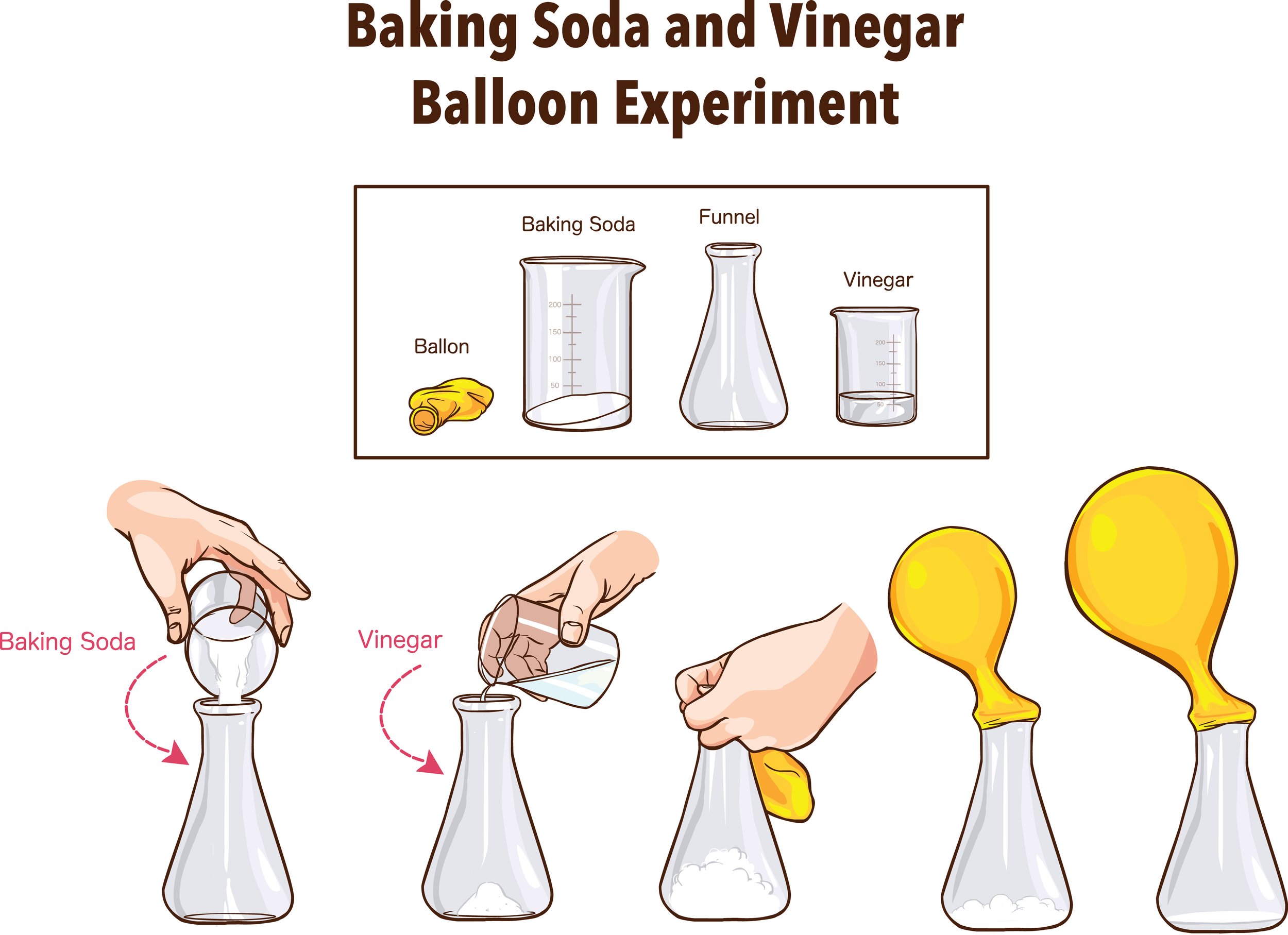Easy carbon dioxide experiment with a balloon
As we’ve written in our carbon guide, in nature, carbon forms the gas called carbon dioxide. Carbon dioxide is a gas that acts like a greenhouse when it enters the atmosphere. It traps heat coming from the sun, which keeps the temperature suitable for living and protects us from freezing. But when there’s too much gas, too much heat is trapped, resulting in the Earth getting warmer. That leads to global warming and climate change.
And as we know, practice is the best way to learn and remember new knowledge. That’s why, this easy and cool chemistry experiment will help kids see and experience the invisible carbon dioxide gas.
All you need is:
1 balloon
1 bottle
1 kitchen funnel
1/2 cups of vinegar
2 teaspoons of baking soda
Why vinegar and baking soda? Because one is an acid and the other a base. When you mix them, they release carbon dioxide gas. So let’s do it!
Step 1: Start with pouring 1/2 cups of vinegar into your bottle.
Step 2: Using the funnel, add 2 teaspoons of baking soda into your balloon. It’s important to make sure that the baking soda goes to the large, bottom area of the balloon.
Step 3: Now it’s time to connect the bottle to the balloon! Stretch the balloon around the neck of the bottle (which is already filled with vinegar). Make sure that the baking soda remains in the balloon by holding the top of the balloon over one side of the bottle while attaching it to the bottle’s neck.
Step 4: Almost there! Hold the balloon around the neck of the bottle and stand it upright. Allow the baking soda to drop into the bottle and to mix with the vinegar. A chemical reaction will take place quickly. You will see that the mixture will bubble and then release gas. As a result the balloon will begin to inflate!
For visual navigation, follow Syerra’s video.




